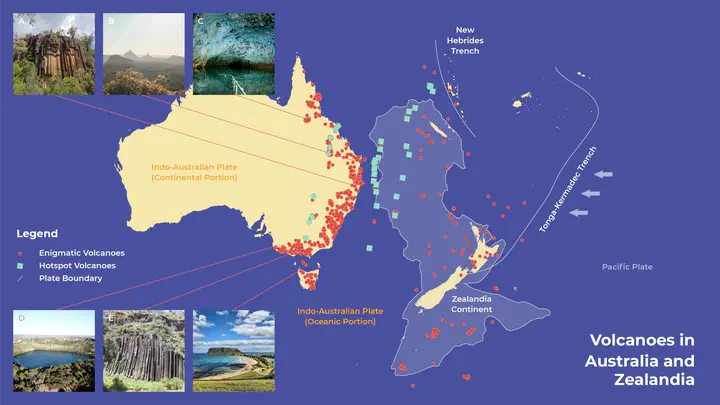
Abstract
Long-lived, widespread intraplate volcanism without age progression is one of the most controversial features of plate tectonics. Previously proposed edge-driven convection, asthenospheric shear, and lithospheric detachment fail to explain the ~5000-km-wide intraplate volcanic province from eastern Australia to Zealandia. We model the subducted slab volume over 100 million years and find that slab flux drives volcanic eruption frequency, indicating stimulation of an enriched mantle transition zone reservoir. Volcanic isotope geochemistry allows us to distinguish a high-μ (HIMU) reservoir (>1 billion years (Ga) old) in the slab-poor south, from a northern EM1/EM2 reservoir, reflecting a more recent voluminous influx of oceanic lithosphere into the mantle transition zone. We provide a unified theory linking plate boundary and slab volume reconstructions to upper mantle reservoirs and intraplate volcano geochemistry.
Check out our article in The Conversation for an explainer on this exciting scientific discovery.